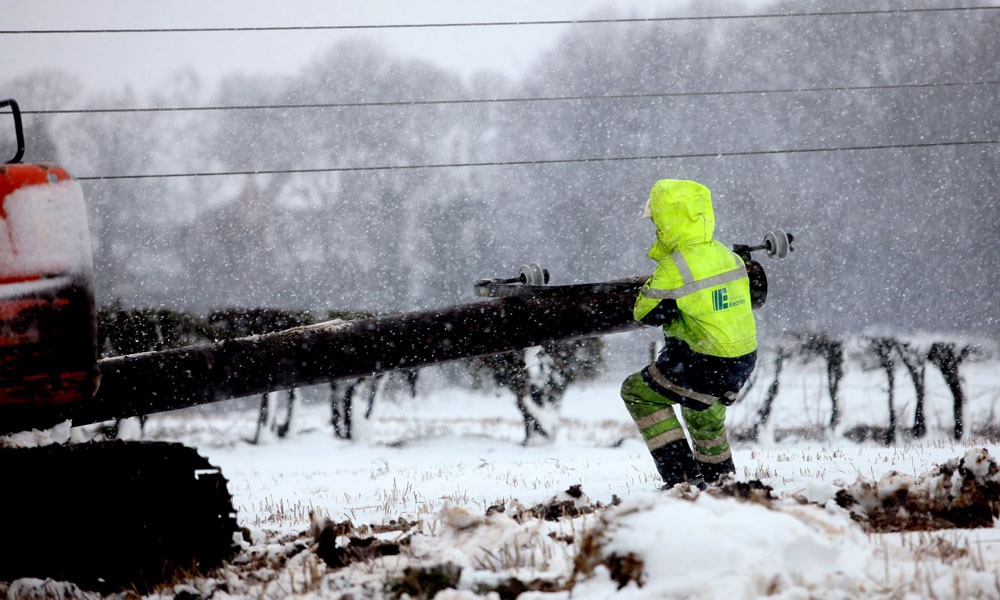Severe weather such as storms, snow, gales, flooding and lightning can all affect the electricity network, damaging equipment and causing power cuts to homes and businesses.
At Northern Ireland Electricity Networks (NIE Networks), we have regularly reviewed plans in place to respond to severe weather.

Storm Preparations
We are in regular contact with the Met Office. The more information we have about the weather, the better we can respond to it.
When we receive a severe weather warning, we mobilise staff and resources. Materials and emergency crews are sent to the areas most likely to be affected by severe weather, and we have heavy machinery on standby to help us restore electricity supplies as quickly as possible.
Each area of Northern Ireland has a local incident centre. During severe weather these are staffed by engineers and administrative staff, who co-ordinate the repair and restoration plan. These centres feed information back to our central control centre, which co-ordinates the restoration process and provides up to date information for customers.
How We Communicate With Customers
We have invested heavily in communications systems to keep customers informed when they are without electricity. If you are without power, you can contact us over the phone or online.
During severe weather, especially in the early stages, thousands of customers will contact us. As it is not possible for our call handlers to speak to every customer personally, our High Volume Call Answering (HVCA) system uses telephone number and voice recognition technology to identify properties without electricity supplies and provide you with the most up to date information for your area.
How We Repair The Network
Once the severe weather has passed and it is safe to start the restoration process, our emergency crews survey areas with network damage, repair faults and restore power. Emergency crews, machinery and supplies are deployed to areas with the greatest damage to speed restoration and reduce response time.
Hazardous situations and damage affecting large numbers of customers are given priority. Damage can include trees blown down across electricity lines, broken poles, damaged transformers and blown fuses, all of which can take time to repair safely.
Helicopters are kept on standby to survey damage in more rural areas. Heavy snow and icy conditions can hamper the restoration process, blocking roads and making travel difficult for emergency crews. Where possible, we use four wheel drive vehicles and co-ordinate repairs with Roads Service and local councils.
